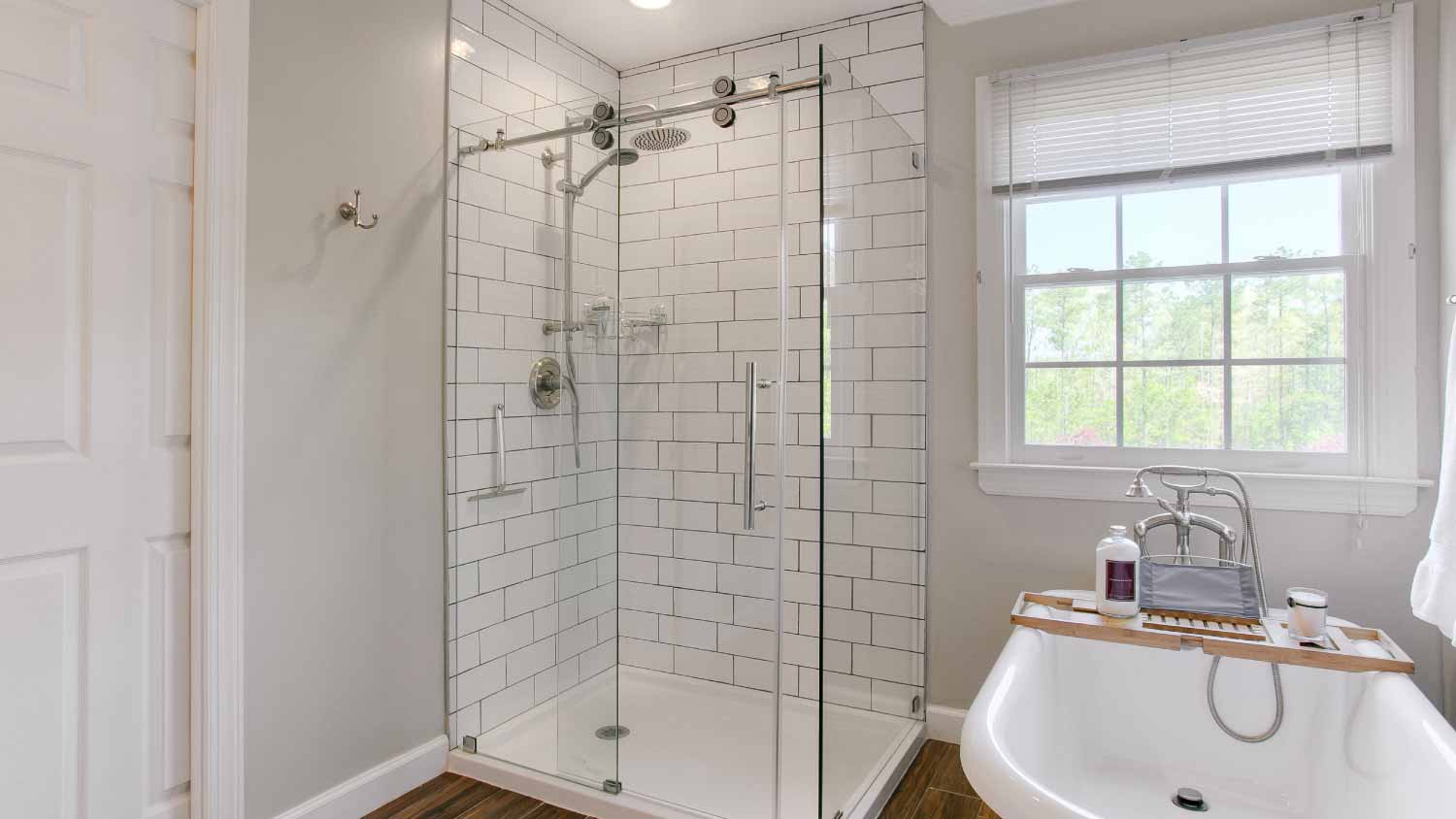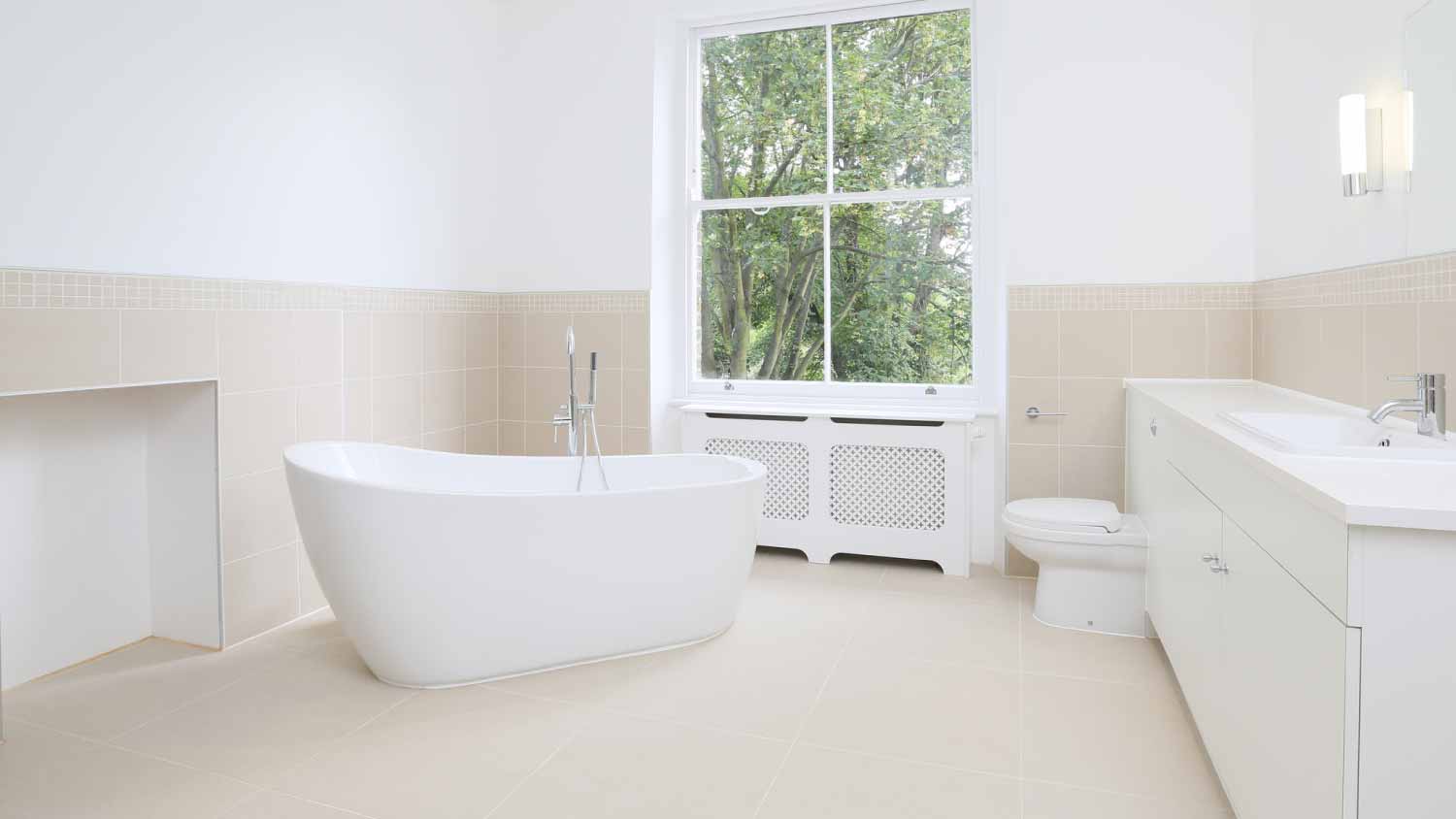
Find out how much it costs to refinish your porcelain sink and the factors that influence the final price to make it look like new, including size, type, and labor.
With a simple repair kit and a little patience, you can tackle this DIY project with ease


Thankfully, repairing a chipped tub isn’t difficult with handy tub repair kits. If you have ever dropped a heavy bottle of body wash, you may know that heavy objects or general wear and tear can take a fresh chip out of your bathtub. But a little nick here or there doesn’t mean you have to replace the whole tub. If you have a bathtub that needs a little TLC, follow these steps to repair a chip.
Before repairing the chip, ensure you have the right supplies to do the job. Nothing could be worse than trying to hide a chip in your shiny white bathtub using a cream- or eggshell-colored filler, making the damage stick out even more.
Before purchasing supplies, double check what material your bathtub is so you’re buying a compatible repair kit. Most hardware stores sell kits compatible with porcelain, steel, ceramic, plastic, and fiberglass bathtubs (which also happen to be the most common tub materials). If your tub is stone or another material, you may need to call a bathtub repair pro instead.
Here are some tips to determine your bathtub material:
Tap the sides: Acrylic or fiberglass tubs sound hollow, and metal tubs emit a deeper sound.
Look for supports: Heavier tubs made from cast iron may have claw feet, framing, or other supports to better hold the weight of this material.
Use a magnet: Magnets will stick to metal tubs made with steel or cast iron, which typically have an enamel coating.
Consider the damage: Porcelain tubs are the most susceptible to chipping. If you see cracks, scratches, or discoloration, the tub is likely acrylic or fiberglass. Rust is a sign of a metal tub.

Bathtub surfaces collect a lot of oils from our skin and bath products, but these substances will prevent the repair compound from sticking to the tub. To repair a chipped tub, you’ll first need to thoroughly clean the bathtub using a sponge and soap or a bathtub cleaner. After cleaning the surface, use a lint-free cloth to dry the chipped area.
When at the hardware store, make sure you’re purchasing a compound kit that matches your tub’s color as closely as possible. If you have a custom color or stone, it may be better to call a pro who will have a much wider range of options. Following the manufacturer’s instructions on the label of your bathtub repair kit. Many kits come with a two-part compound. Mix the two parts of the compound in a small mixing bowl or even on a piece of scrap cardboard. Use a wooden stick, small spatula, or another mixing tool to combine the two parts of the repair compound.
If you have a one-part compound, simply shake the bottle before applying it to the chipped tub.
Place painter’s tape around the chipped area to catch any dripping epoxy. Your repair kit may include an applicator, or you can use a wooden craft stick or a paintbrush to apply a thin layer of the compound over the chip.
Follow the repair kit instructions on drying time, as some products may need just a few hours to dry, while others may take 24 hours.
Once the first thin coating has dried, you may need to continue applying layers of compound until the hole is filled and slightly higher than the tub’s surface. Don’t worry, you’ll be sanding it down later for an even finish.

For a seamless look, you’ll need to sand down the area to make it level with the rest of the tub. Use ultra-fine sandpaper to avoid scratching the tub’s surface, so choose a sandpaper grit that’s 2,000 or higher.
Before you start sanding, spray the repaired area with water. Gently buff the area with the sandpaper while keeping the area damp. Test the spot with your hand occasionally. Once it feels smooth, you’re done sanding.
After you’ve filled in the chip, you may notice it still looks sunken in or uneven with the rest of the tub’s surface. Or, you may have other chips that need filling. Repeat the previous steps until the chips are smooth and aligned with the tub surface.
It costs anywhere from $195 to $300 to repair a chipped bathtub, depending on the tub's condition. Expect to pay a bit extra to match a custom tub color. Not all chips, however, can be professionally repaired. Large cracks and gouges may require a replacement tub. To that end, replacing a bathtub costs $1,900 to $9,160, depending on materials, design, and size.
Repairing a small chip here and there will cost you about $10 to $35 for a DIY repair kit, or if you decide to refinish the tub, a refinishing kit will cost about $30 to $150. If you want to make sure the repair looks seamless, it’s best to hire a bathtub refinisher to tackle this project for you. Additionally, bathtub refinishing exposes you to fumes like methylene chloride that is exposed to for longer periods of time can result in negative health effects similar to carbon monoxide poisoning.
Hiring a pro to refinish a tub costs around $330 to $630, while simply having a chip or two repaired will cost around $195 to $300. Full refinishing involves removing the old coating, filling in scratches, cracks, and chips, and repainting the tub to look new. It’s a good alternative to replacing a tub since tub replacements cost an average of $4,150.
Paige Bennett contributed to this article.
From average costs to expert advice, get all the answers you need to get your job done.

Find out how much it costs to refinish your porcelain sink and the factors that influence the final price to make it look like new, including size, type, and labor.

Bathtub refinishing costs are relatively inexpensive and can make your bathroom look like new. Our guide gives you the information to learn more about this process.

If you’re installing or replacing your shower doors, you’ll be working with a glass installation pro. Here are the most common shower door questions for this project.

If you’re looking for a bathtub upgrade, a liner is a quick and easy choice. Here are the different types of bathtub liners and a little bit about the process.

If you're looking for an economical way to spruce up your bath or kitchen, here are the bathtub refinishing questions you should be asking a contractor.

Acrylic bathtubs are a common go-to, but are they right for your bathroom remodel? This guide breaks down the pros and cons of acrylic tubs.